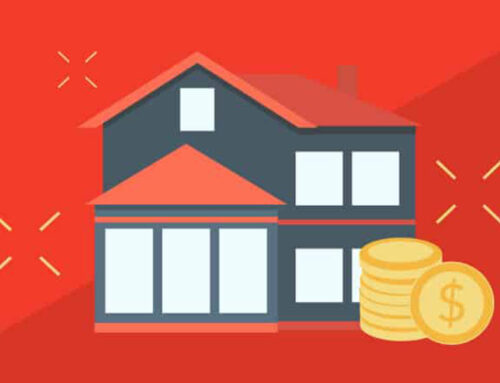During the summer months, my wife goes to Sunrise Yoga on the Canal on Wednesdays. I do a few laps around the walk’s three-mile loop, then grab a coffee. It’s a fairly new routine for us, but we’re glad we picked it up. We meet a lot of interesting characters that early in the morning, including my new friend, Jack, who has a passion for real estate, like me. He’s not a seasoned investor like I am. But, he has been thinking about investing in real estate after retirement, which is just around the corner for him. When we met for coffee last week, he asked me what I thought about investing in Indianapolis real estate and if it was a good time. I told him that, in my opinion, the timing was perfect.
Why You Should Start Investing in Indianapolis Real Estate
Part of what makes the timing so great for investing in Indianapolis real estate is the state of the city’s economy. Unemployment is lower than the national average, hovering between 2.8% and 3.4%, according to the Bureau of Labor Statistics. And, several industries—like healthcare and the biosciences, information technology, and even transportation—have grown considerably in the last few years. In fact, some of the country’s most well-known companies, and largest employers, are now headquartered in Indianapolis: Anthem, Inc., Angie’s List, and RCI. This combination of an already-low unemployment rate and an ever-expanding job market has helped to boost consumer confidence in a variety of sectors, including the housing market.
The housing market in Indianapolis is a relatively stable market to begin with, but, like a lot of other metropolitan regions around the country, it’s now taking a swing for the fences. It’s not that the city wasn’t hit hard by the housing crisis, because it was. But, it suffered a less severe blow than other cities—San Jose, Las Vegas, and Detroit come to mind—and has been able to recover faster. By the first quarter of this year, the market share of new foreclosure listings for the area dropped to less than 3% and overall foreclosure activity fell by more than 50% from the same time last year, according to the MIBOR Realtor® Association. In correlation, their research also shows that median home sale prices have jumped by 10.3% and home sellers are getting over 95% of their asking price. So, not only does it seem that existing homeowners are confidently meeting their mortgage obligations, would-be homeowners are eager, and able, to buy when a house goes to market.
The surge in consumer spending has put a dent in housing inventory. That dent is likely to grow as lending guidelines continue to relax, making mortgages more accessible to individuals and families who were previously unable to get home loans. But, increased lending won’t be the only source potentially putting pressure on available inventory. Indianapolis has a lower cost of living than other major metropolitan areas, like New York, Los Angeles, and Austin, which could start to draw residents from those cities who are priced out of buying there. Already, the Indianapolis-Carmel-Anderson metro area has added 23,000 new residents to its roster in the last year, according to the Indiana Business Research Center at Indiana University’s Kelley School of Business. Of course, the benefit of an increased demand for housing is that median home sales prices will continue to rise, the time a property spends on the market will further shrink, and sellers can likely keep counting on getting close to asking price. This is great news if you’ve already got an investment property that’s rehabbed and ready to sell.
But, if you’re just starting out, you might think that trying to buy single-family homes as investment property now could pose a challenge—especially if you’re competing for limited inventory with more traditional homebuyers. Except that distressed homeowners who are still struggling to meet their mortgage payments and other financial obligations don’t always advertise as much. If they’re going through a divorce or there’s been a death in the family, they may actually be a motivated seller, but too embarrassed to say so. In addition, though foreclosure activity is down, many homeowners who bought before the crash are still underwater on their properties. Provided you have a way to approach these distressed homeowners to help pull them up from the housing costs that are dragging them down, you’ll have a way to enter the market as an investor.
That is the crux, though, isn’t it? Even though it’s the perfect time to invest in Indianapolis real estate, it’s not necessarily going to be easy unless you have a marketing and lead generation system that gets you in touch with homeowners who need to sell and who want to sell to you. These are the kind of leads that’ll help you land deals that make sense in a seller’s market.
Start With Great Leads and You’ll Land the Best Deals
I take pride in making good investment decisions, but I certainly don’t do it in a vacuum. As an independently owned and operated HomeVestors®’ franchisee, I rely heavily on HomeVestors®’ marketing tools and lead generation resources to bring in the leads on some of the best deals. Thanks to the nationally-known and trusted “We Buy Ugly Houses®” campaign that reaches distressed homeowners throughout Indianapolis, I get the leads I need to keep growing my business. And, that’s what I told Jack. As long as he’s smart about how he sources leads in Indianapolis, his timing for investing will be spot on.
It’s never a bad time to invest if you’ve got the tools and resources to do it right. Make the smart move and contact HomeVestors® about how you can start investing in Indianapolis today.
Each franchise office is independently owned and operated.
Contact
"*" indicates required fields




